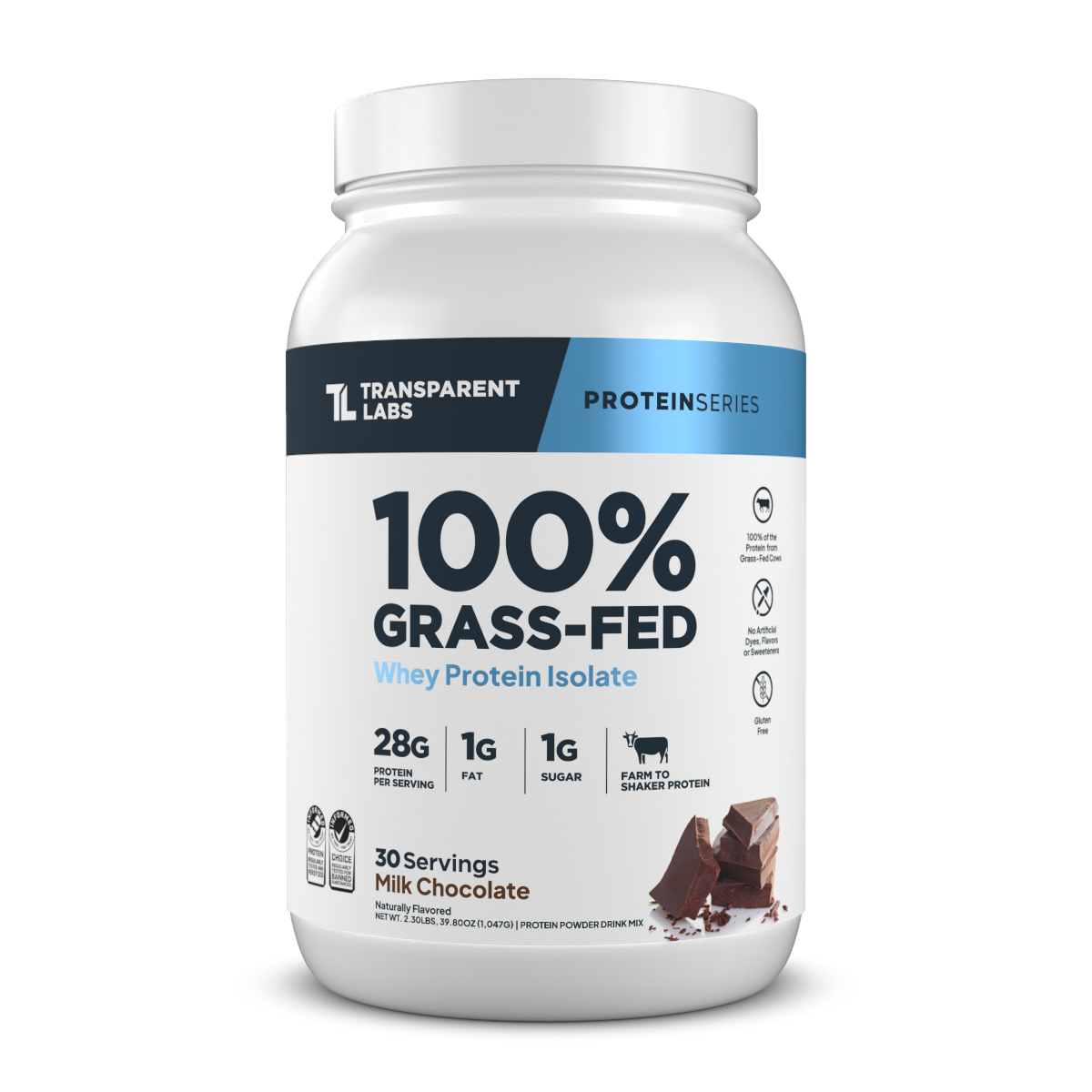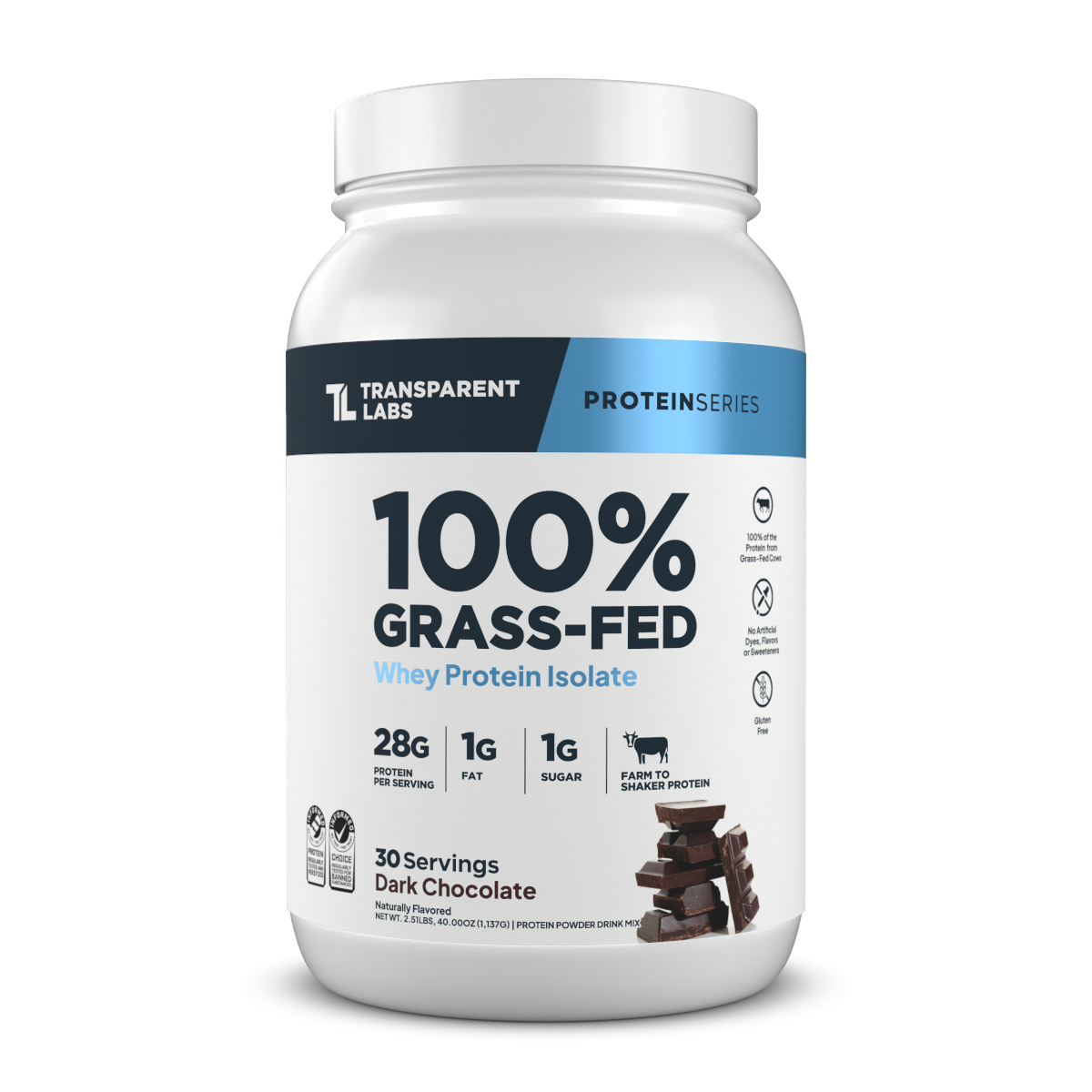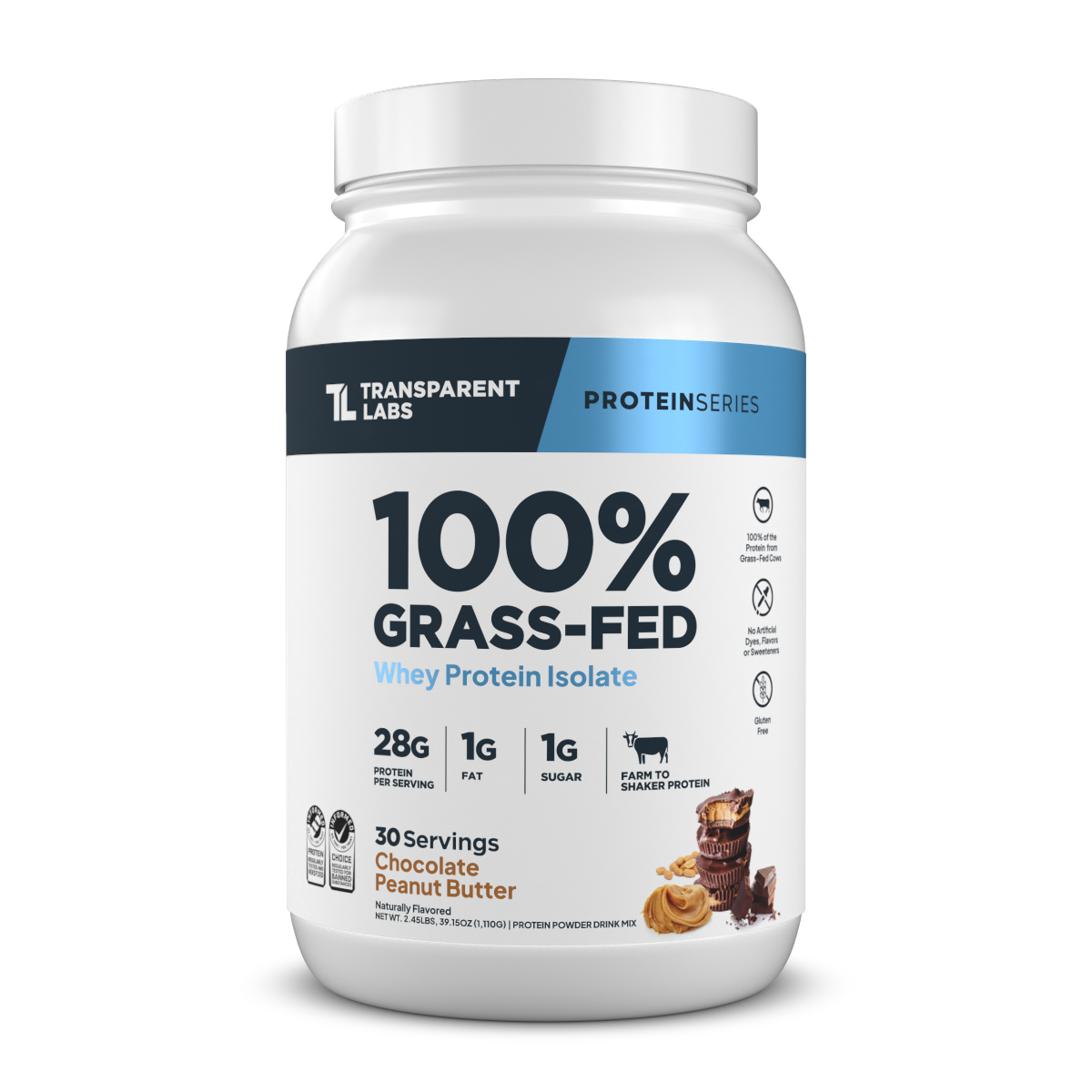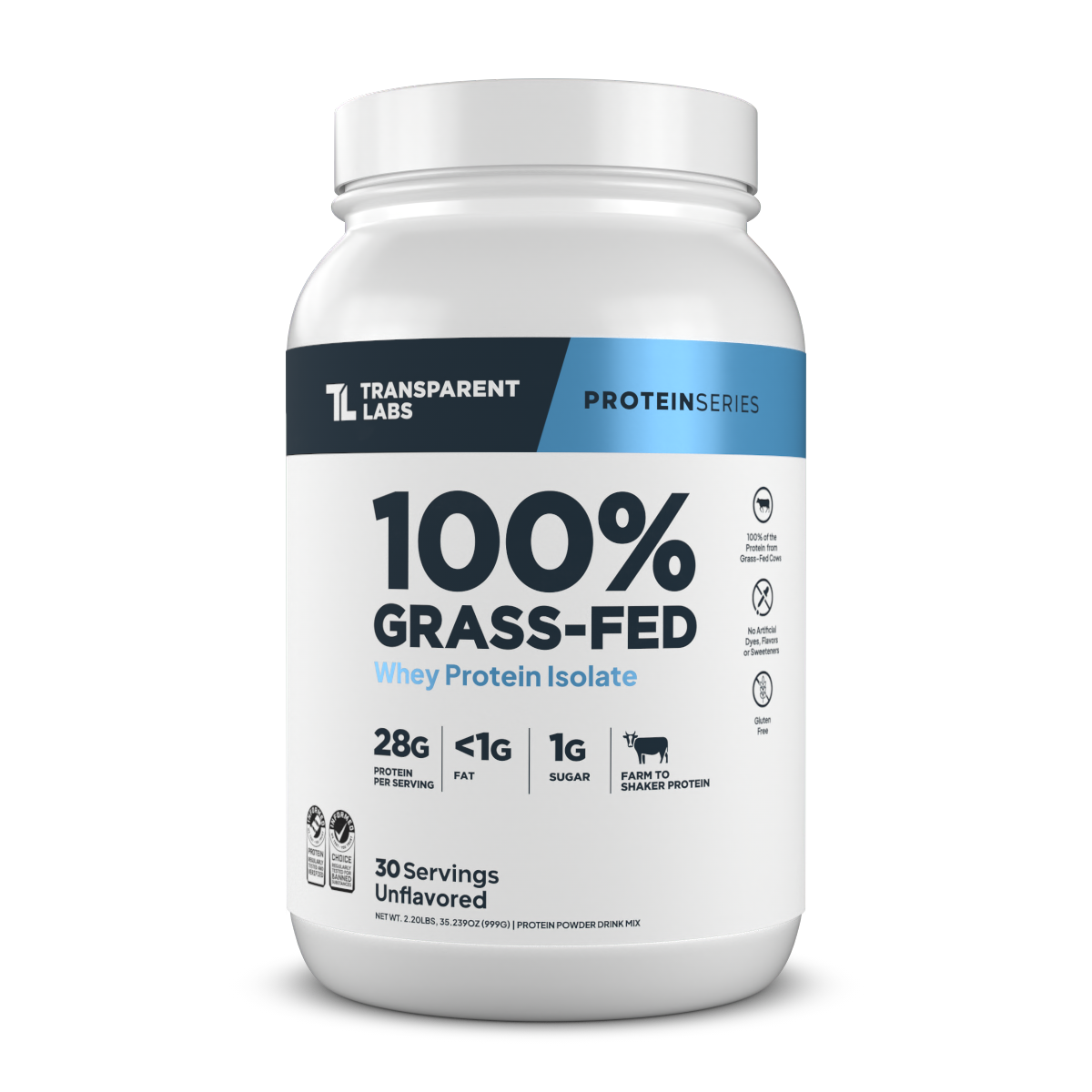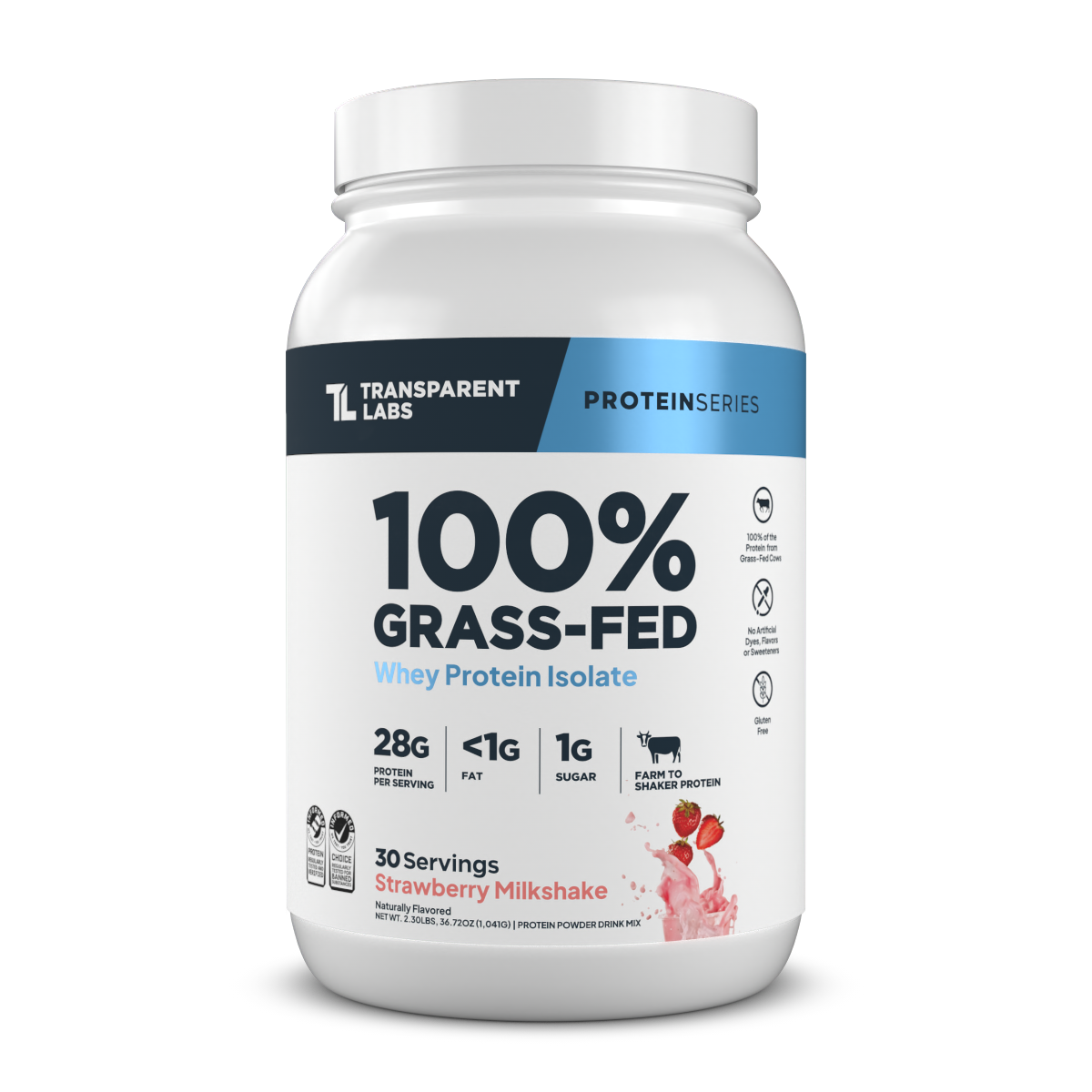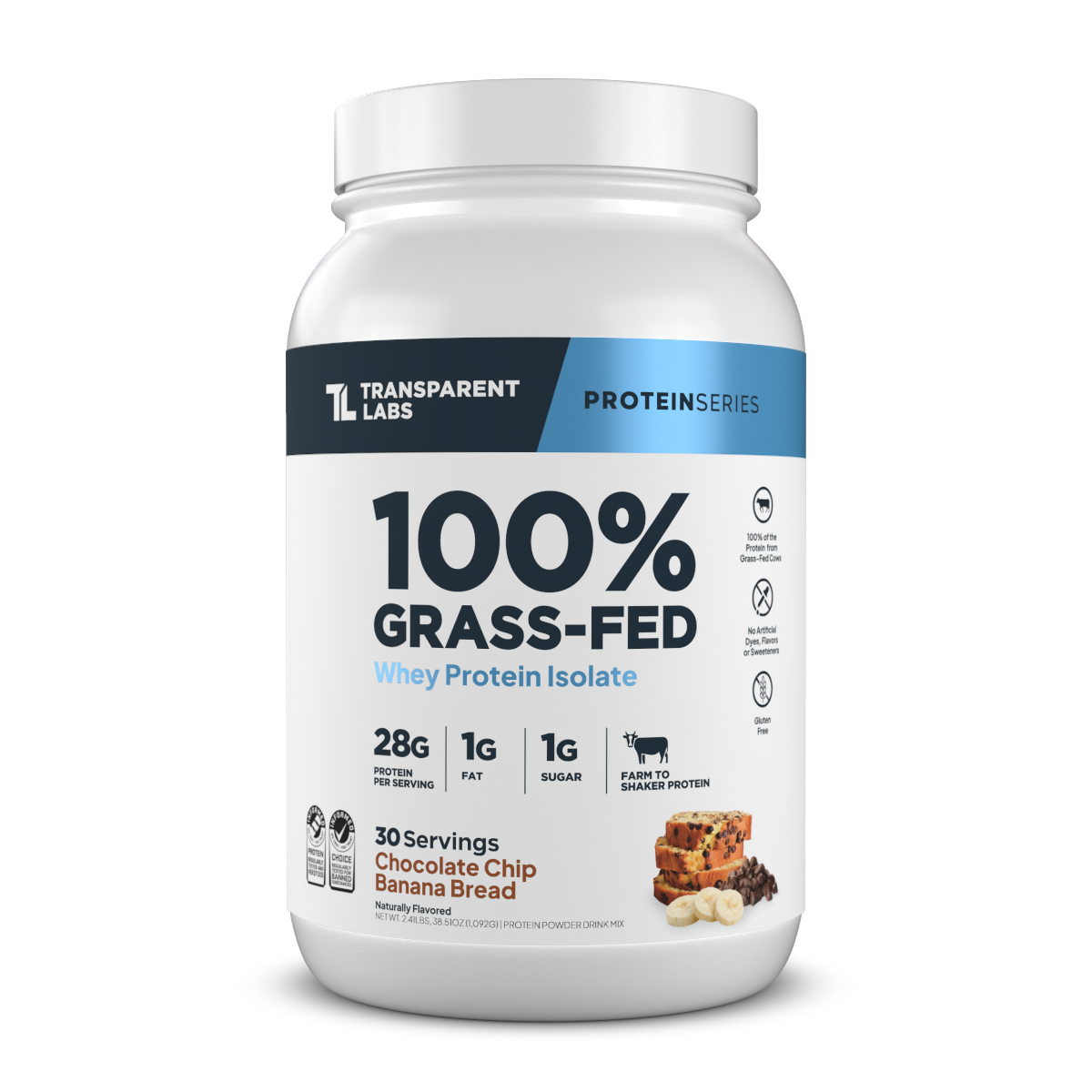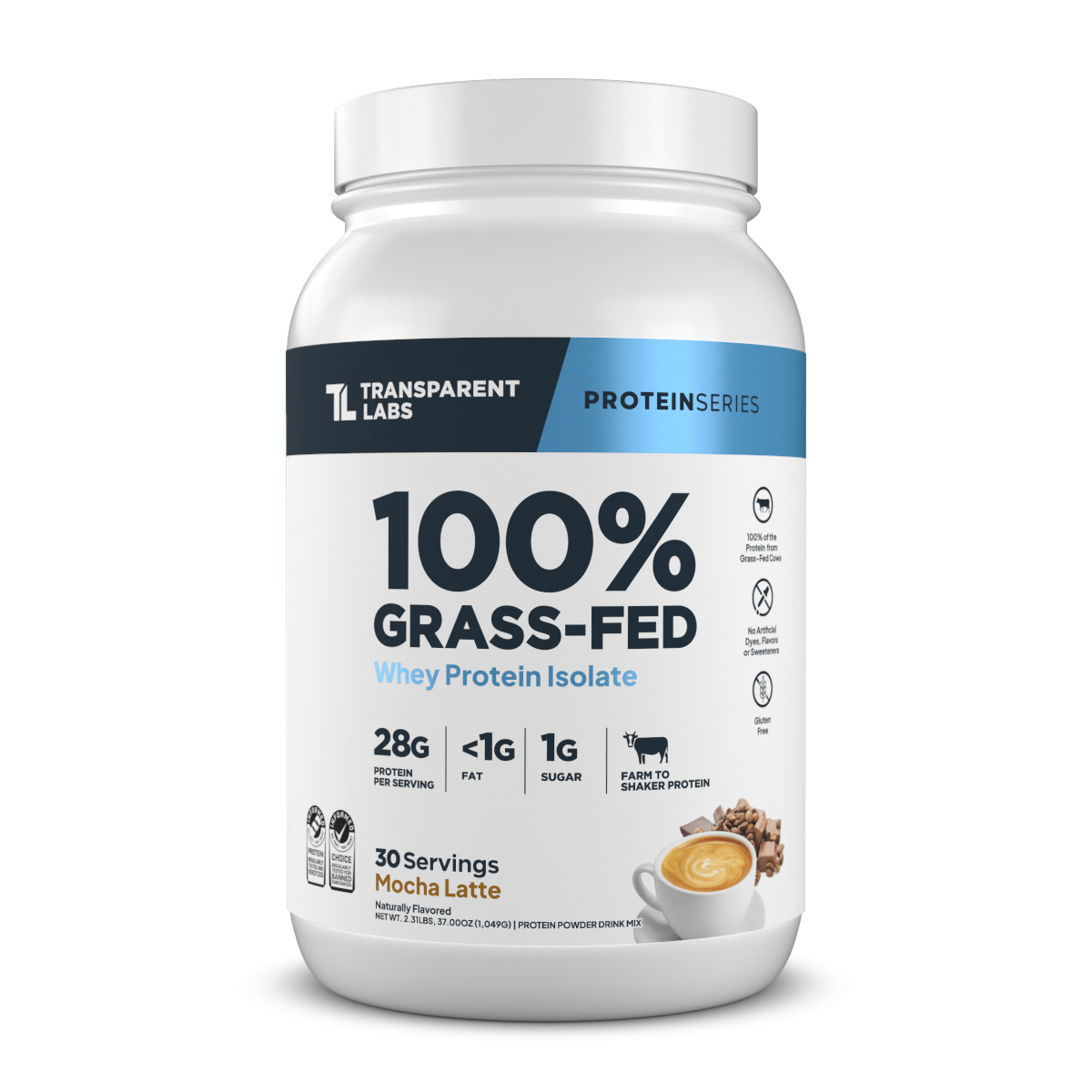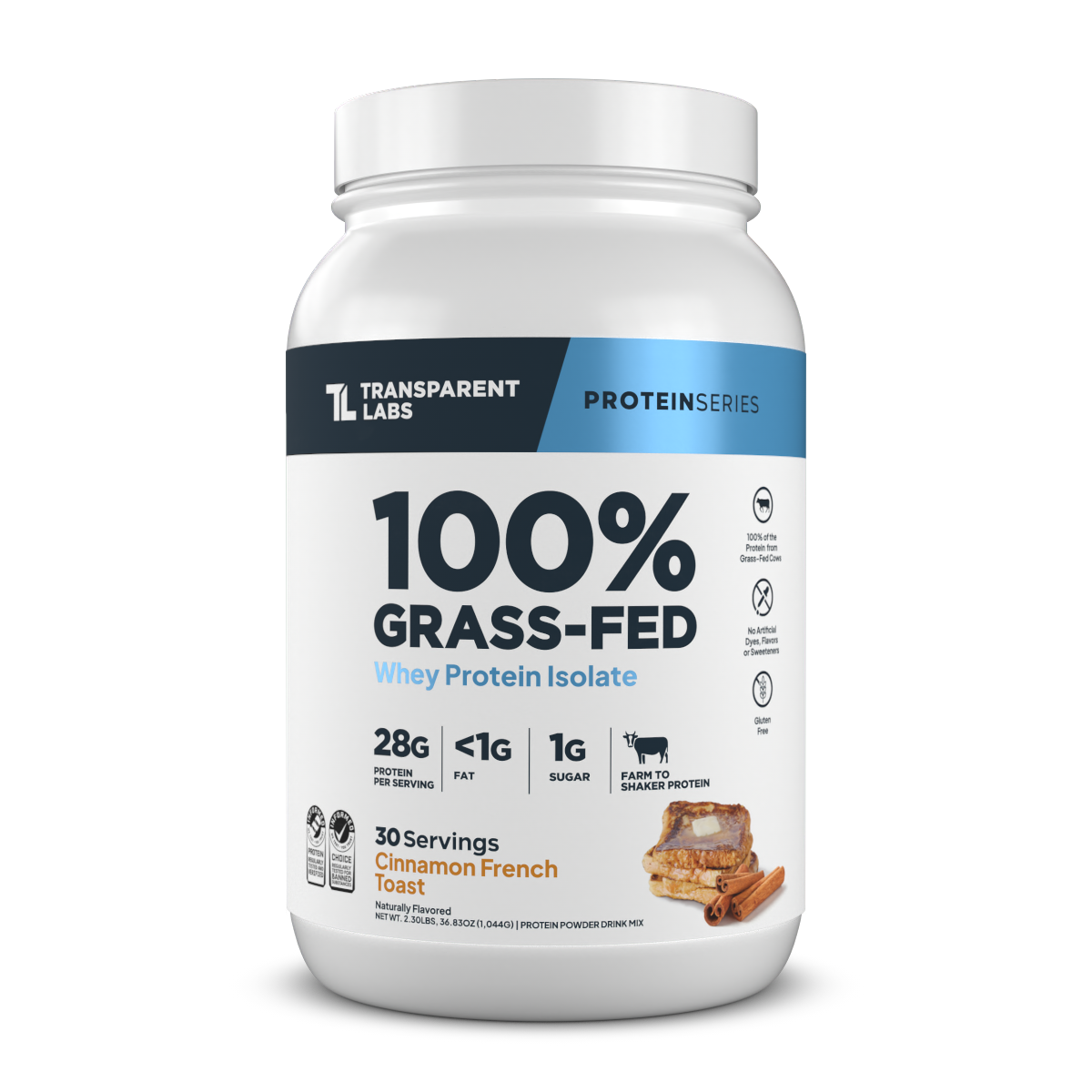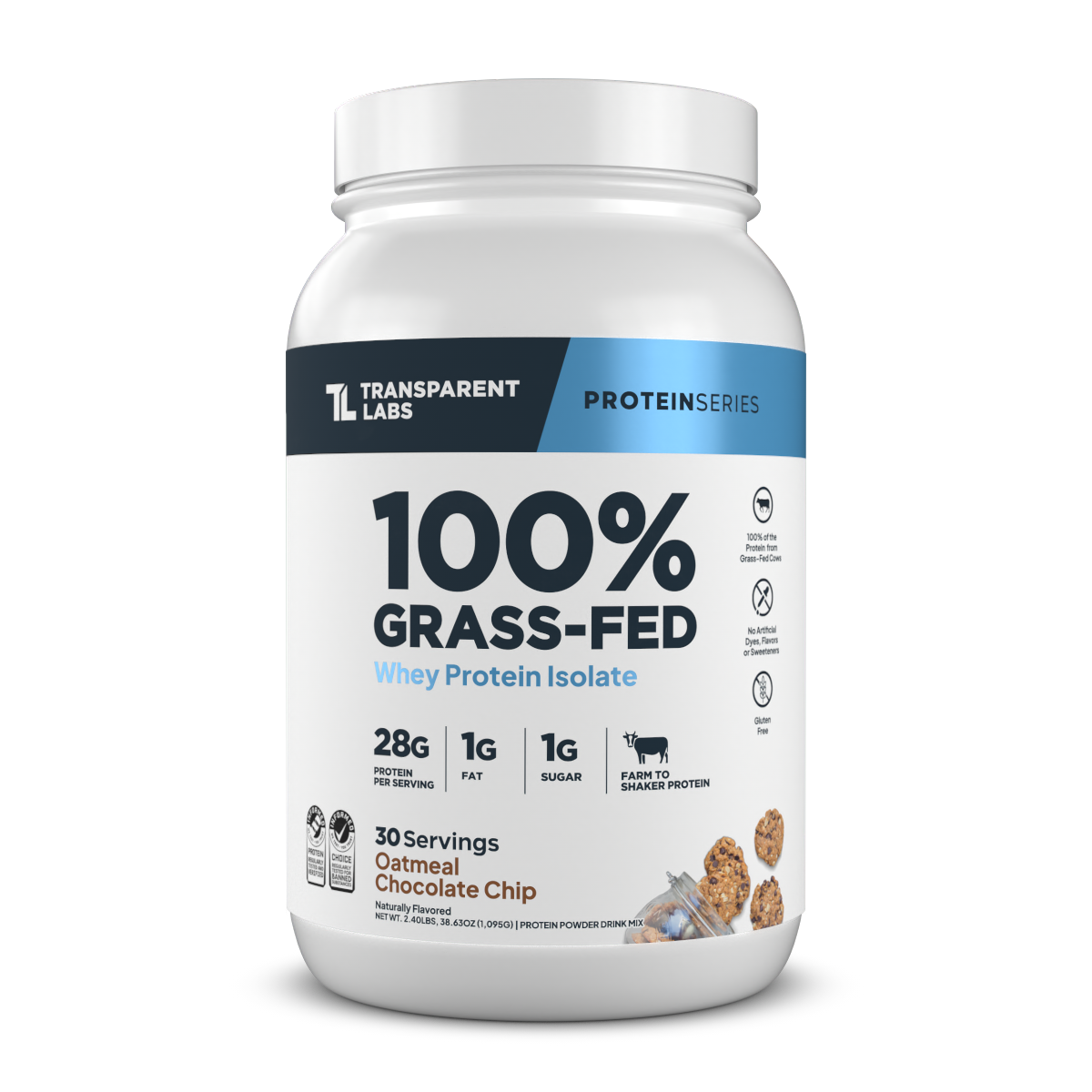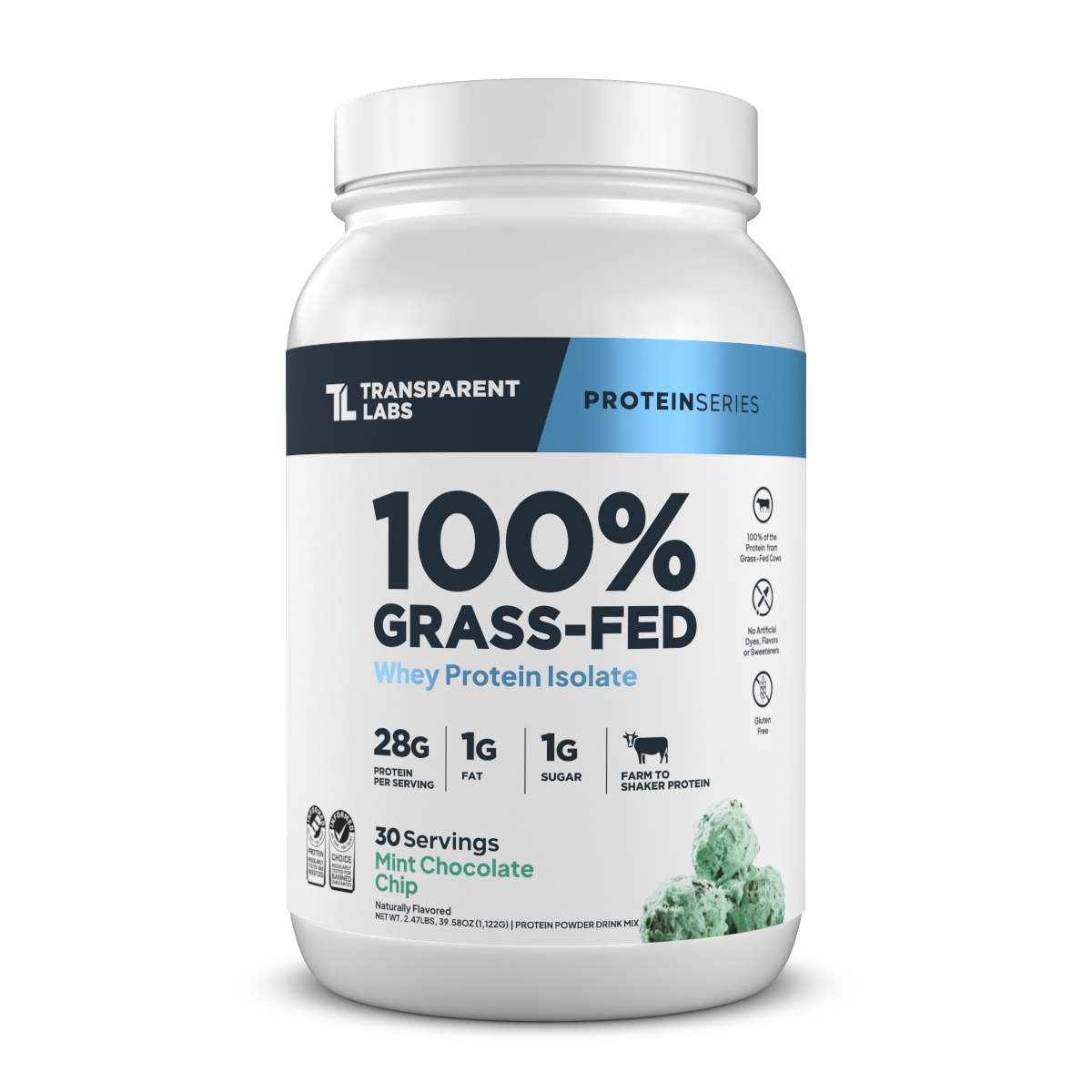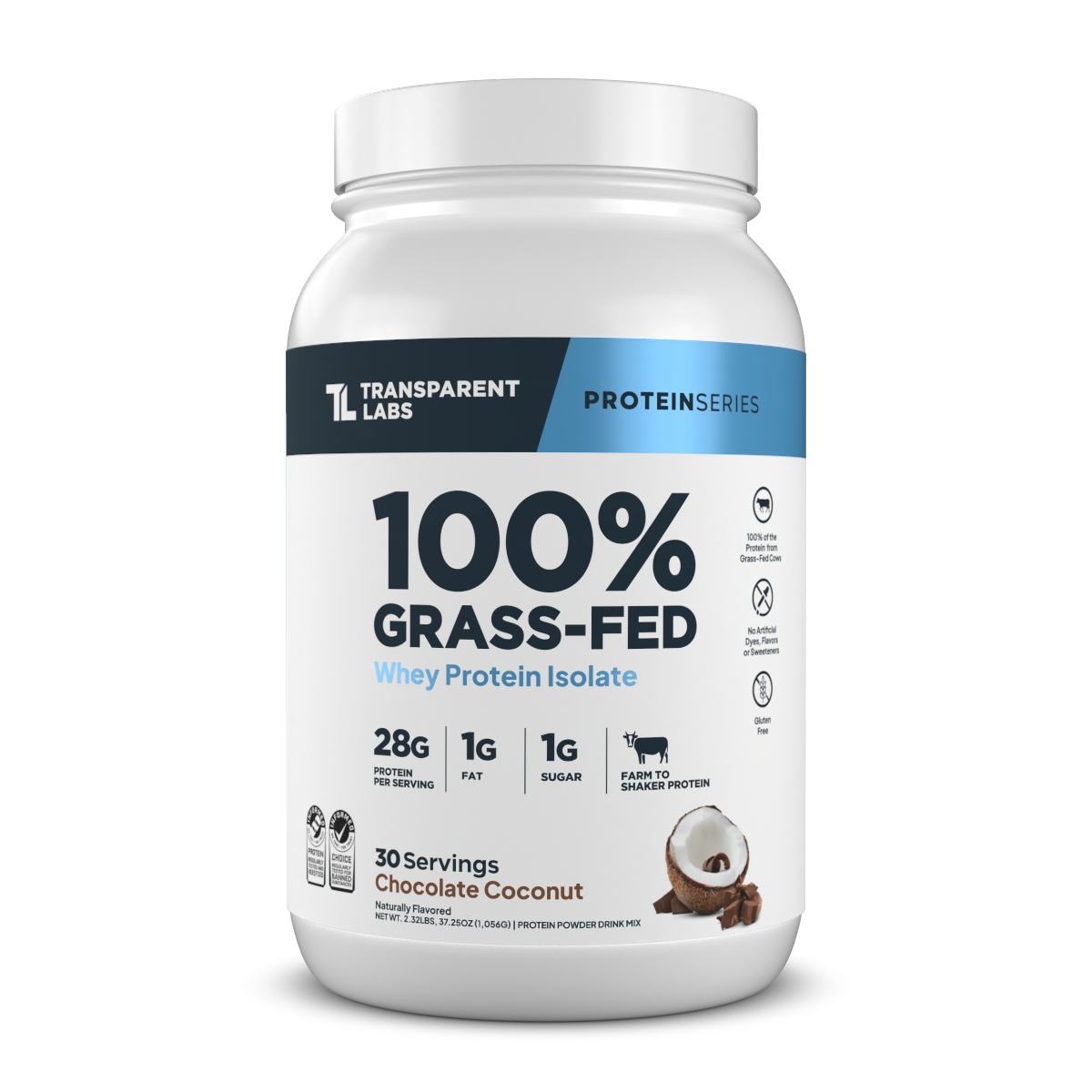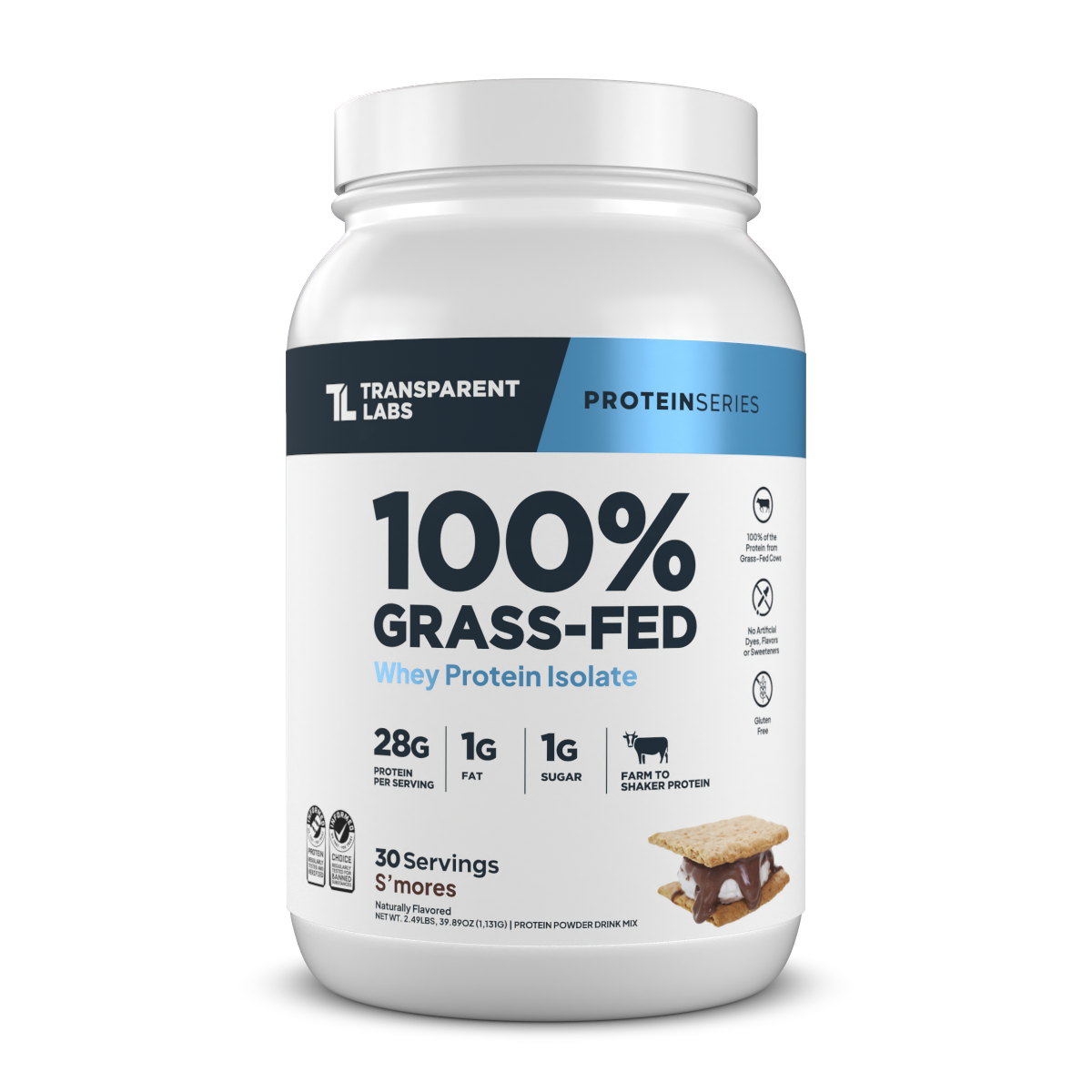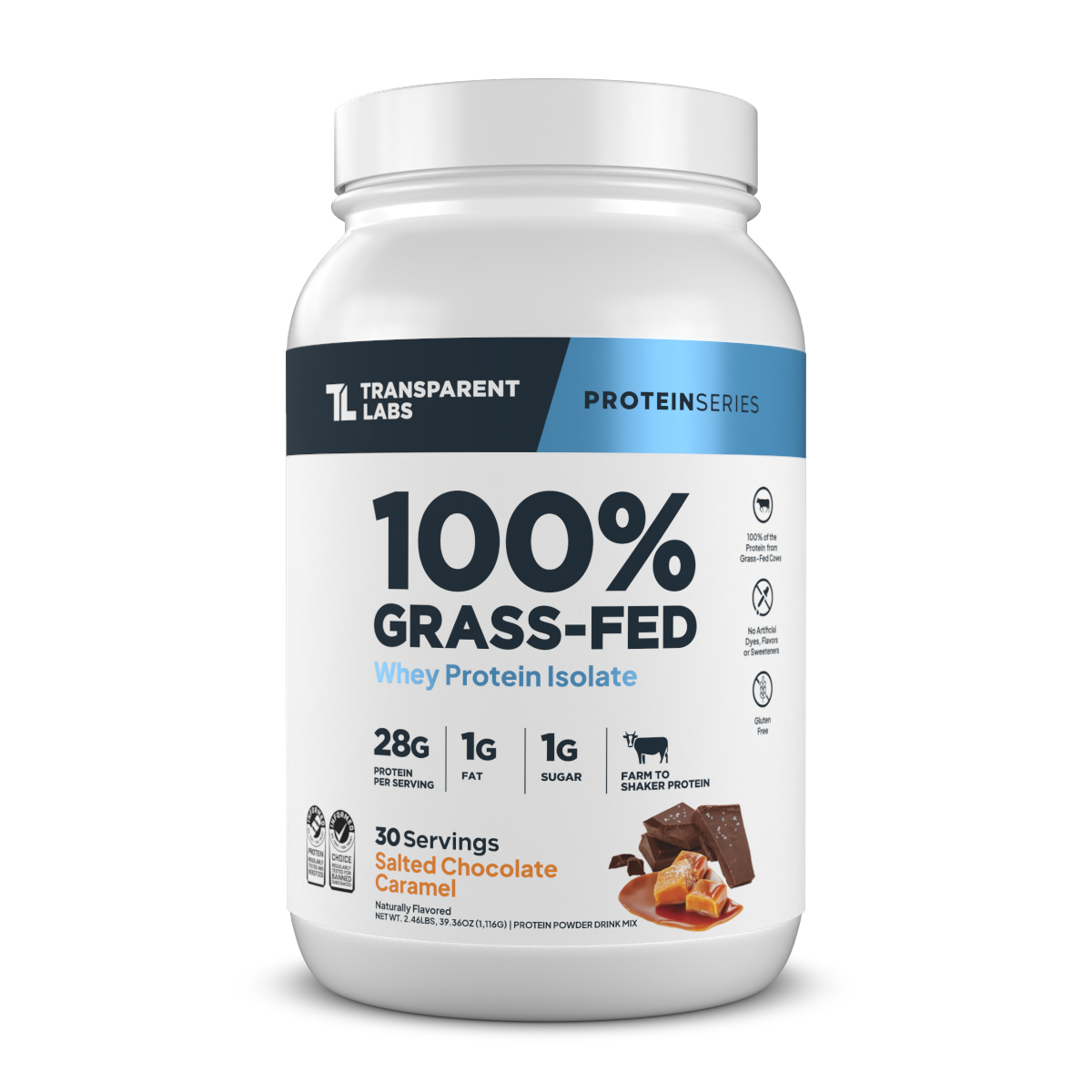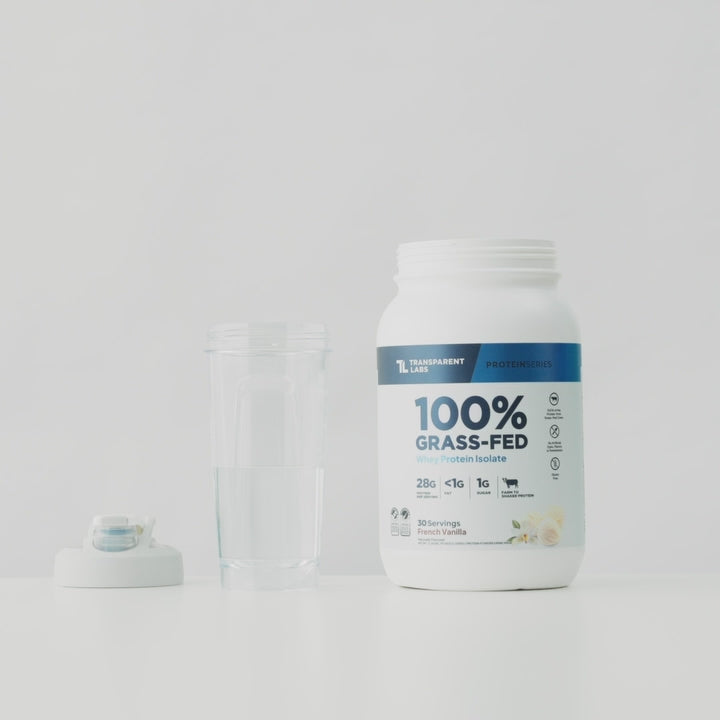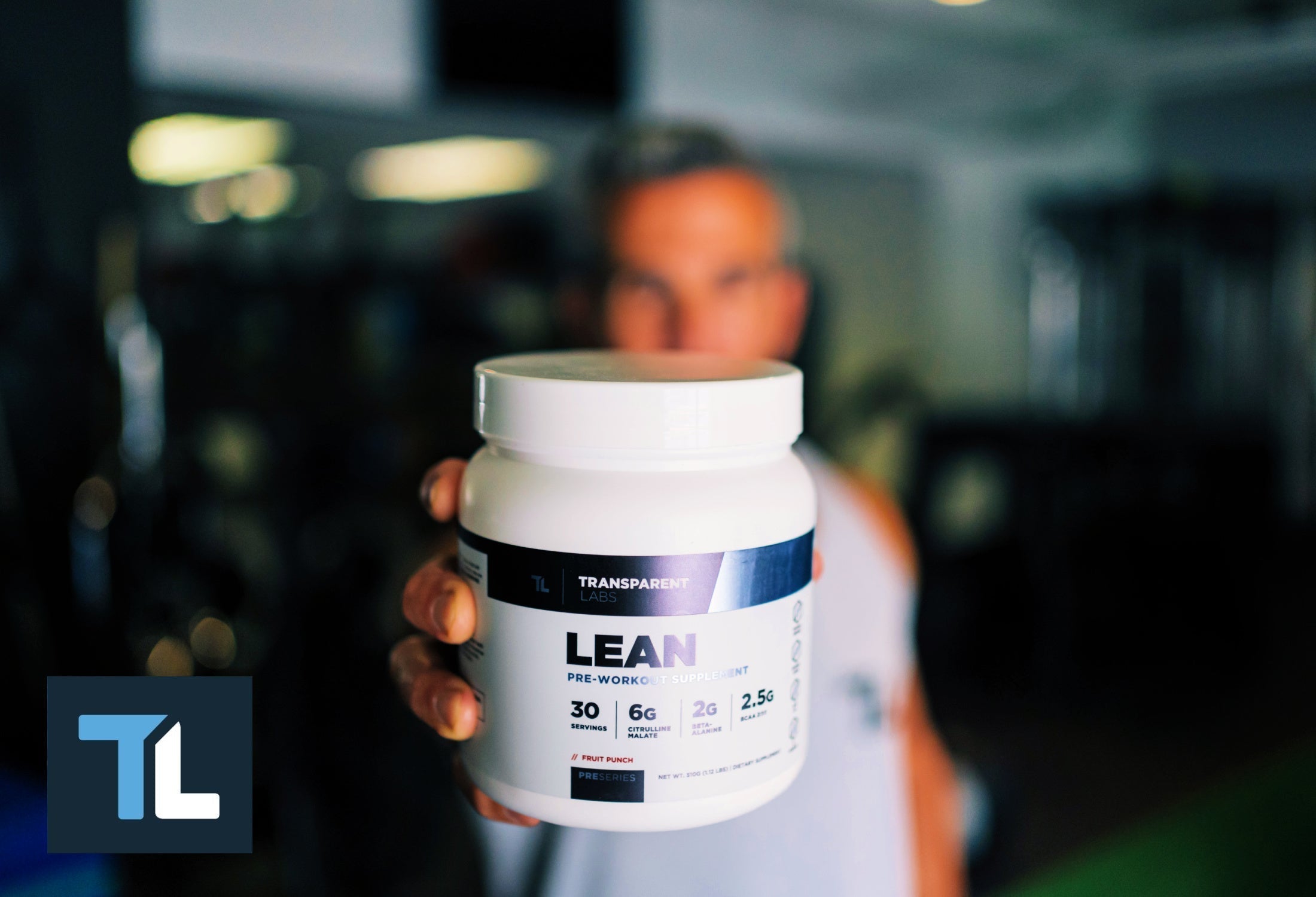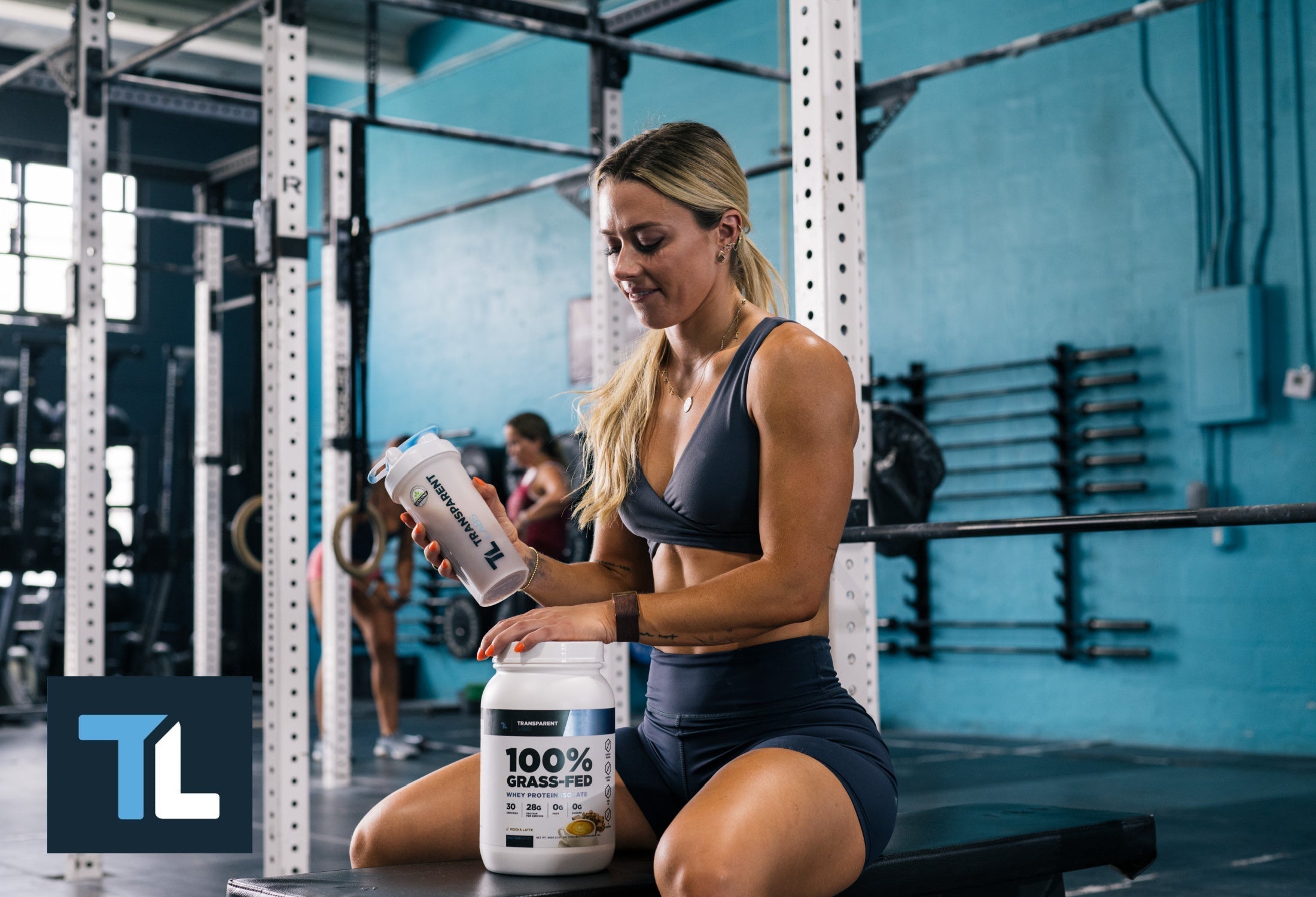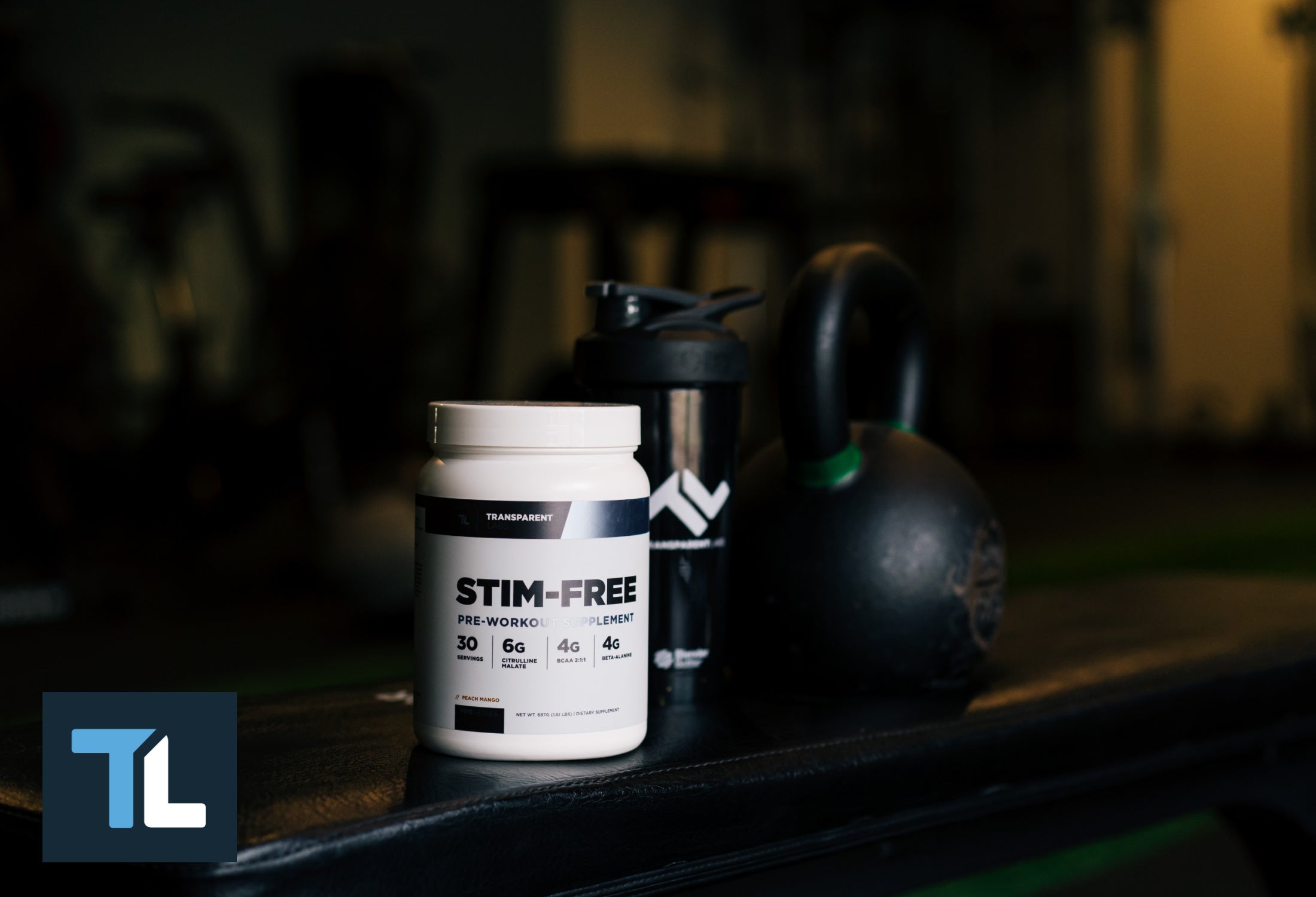You should be sure to give yourself plenty of grace if you have some initial trouble grasping the concept of a clean protein powder, or you wonder why you’ve never even heard the term before. It’s usually quite a revelation to people who are receiving their initiation in health, fitness and nutrition that they should be concerned about dietary supplements in the first place, or that optimal protein intake is crucial to achieving goals like muscle growth and muscle recovery.
Once you grasp that understanding, your first step is usually to snag either a whey protein supplement, or one of the many plant-based protein powders. As long as it provides your body with the desired amount of protein per serving, you’re happy with your purchase, and confident that your body will respond accordingly.
While this approach — which is quite normal — is sufficient to ensure that your protein intake is adequate in a foundational sense, it also prompts you to overlook everything other than the protein content contained within the whey protein isolate that you’ve settled upon.
This is unfortunate, because while you’re mixing and drinking your protein shake in the pursuit of new lean muscle mass, there may be hidden ingredients in your protein selection that are of no nutritional value. In fact, these invisible additives may be actively working against your pursuit of muscle growth, and possibly even compromising your health in a more direct sense.
It’s things like this that make it important for you to be able to identify what a clean protein powder is. For this reason, we’re going to explore what makes dietary supplements clean, why the cleanliness of protein powder is important over and above its raw protein content, and why it’s in your best interest to consume only clean protein powder if you desire to take a holistic approach to health.
What is a clean protein powder?
Point blank, the basic definition of a clean protein powder is that it is a protein powder that has minimal processing, and contains little to no artificial ingredients, including artificial flavors, dyes, and sweeteners. This definition can further extend to the omission of genetically modified organisms (GMOs), along with omitted fillers and allergens.
Finally, clean protein powder may even include additional elements of purity in its production, like sourcing exclusively from grass-fed cows, and using only natural flavors. In keeping with this, an exceptionally clean protein powder might take the form of a grass- fed whey protein isolate, which we’ll be sure to define as we go.
Taking all of this into consideration, a standard clean protein might take the form of a grass-fed whey protein that has undergone a refining process to eliminate fat and lactose, guaranteeing that it is allergen free, and is rid of as many artificial additives as possible.
Why Do You Need Protein Anyway?
Just in case you were simply following the crowd when it came to boosting your daily protein intake with a protein shake, and you weren’t aware of the science that makes consuming protein absolutely critical to human health, it’s helpful to understand what makes the right protein powder an essential staple in your supplement arsenal.
Tissue Restoration
A fresh round of daily protein intake is required to preserve and restore the vitality of your muscles and other body tissues. When your digestive system encounters a protein source — which is essentially a bundle of amino acids — it routes those amino acids to your muscle proteins, which compose your muscle fibers.
At that point, through a process called muscle protein synthesis, your body converts the inbound amino acids into new muscle proteins. As such, your daily protein intake facilitates the maintenance of a stable, functional body.
Tissue Creation
In addition to preserving your body, the amino acids contained within protein are also responsible for repairing muscle tissue that has been damaged by exercise, helping it to grow back in a stronger state.
In essence, muscle protein synthesis is also responsible for the creation of new lean muscle tissue, which is why protein powder can be downright essential for success. Even though you may desire to increase your muscle mass rapidly, your current nutrition plan may not provide you with sufficient protein intake to effectuate the growth of new muscle.
By drinking a protein shake, you can speed 20 or more grams of protein to your damaged muscle fibers when they are most in need of repair, ensuring that you’re maximizing the muscle growth induced by your latest workout. More importantly, by consistently taking protein powder and other protein supplements, you can dramatically boost your average daily protein intake, guaranteeing that your body has ample amino acids to support the constant growth of new lean muscle tissue.
What Should You Look For In a Protein Powder?
There are so many varieties of protein powder on the market, but even if you’ve settled on whey protein powder as your go-to protein source, you still have to choose between whey protein concentrate, whey protein isolate, and the many different flavors available to you. And this is all before you factor in the original source of the whey protein, and everything that might be mixed with it.
Therefore, it’s helpful to know why a specific whey isolate coconut cream protein shake made by one company might be more conducive to attaining your goals than a sea salt caramel concoction of grass-fed whey protein concentrate from another company.
True Completeness
In order to ensure that you’re getting everything you need out of your protein choice, it’s crucial to know while you’re consuming a given protein that it’s coming from a complete protein source.
The completeness of a protein source is dependent upon its ownership of a complete amino acid profile. Specifically, your protein powder should contain the nine essential amino acids that your body is unable to synthesize on its own.
Without these nine essential amino acids, your body will not be able to properly maintain the health of its structures, resulting in problems like fatigue, a weakened immune system, muscle deterioration, and hair and nails that are thinner and more delicate than they would otherwise be.
BCAA Levels
When it comes to selecting the right protein powder, it can also be helpful to make your choice on the basis of the protein’s levels of branched chain amino acids, or BCAAs. This term refers to leucine, isoleucine, and valine, which are the BCAAs that are found in the highest concentrations within muscle tissues.
The concept of BCAAs also speaks to the fact that while a protein powder may be complete from a standpoint of satisfying the definition of “completeness,” it may still not be as efficient at tissue creation and restoration as protein sources with higher BCAA levels.
In this instance, most plant proteins, like brown rice protein powder or vegan protein powder, will not have the same level of BCAAs as whey protein powders, casein powders, or other animal-based protein products.
Consumability
Just because a protein powder possesses all of the essential amino acids in the right quantities, that doesn’t mean the resulting protein shake is going to be something you want to consume. Whether you prefer vanilla flavor, chocolate flavor, or something more exotic is one thing, but different protein powders have different textures, and they also mix and taste differently, generating different consistencies in the process.
Then there’s the matter of concentrates and isolates. For instance, whey protein concentrate also contains significant quantities of carbs and fat, and still retains some of its dairy properties. On the other hand, whey protein isolate eliminates not only the carbs and fat to provide you with simple protein that includes none of the extras, but it also possesses less dairy properties.
It’s for this reason that many people prefer to drink whey protein isolate over whey protein concentrate if they have dairy allergies or other sensitivities to dairy products.

Why are there so many different protein powders?
Protein powders in the modern marketplace are made of everything from cow’s milk and soy to brown rice and chia seeds. Obviously, these are very different food sources that protein is being extracted and refined from, which begs the question, why is there demand for so many different protein sources?
Ethical Concerns
Different consumers have varying beliefs with respect to what makes a food an ethical choice. For some people, it’s a matter of what the cultivation and harvesting of that food source does to the environment. For others, it’s about the harm done to animals.
On this basis alone, someone might opt to purchase pea protein or the protein from chia seeds because they’re not comfortable with the consumption of products that come from animals.
Allergy Issues
A sizable percentage of the world’s population suffers from allergies related to food, and dairy allergies are among the most prevalent. This is another reason why you might prefer pea protein, or a different plant-based protein source, as these choices will not trigger your unfortunate sensitivity to dairy.
For other people, the issue is gluten, and they require a gluten-free protein option. Curiously, a great many protein powders that would presumably be gluten free become harmful to people with a sensitivity to gluten when certain additives and preservatives are thrown into the formula.
This is why it is very important to do a thorough inspection of supplement packaging, because someone with celiac disease that requires gluten-free food as a life necessity could unintentionally do life-threatening damage to their digestive system by consuming a protein powder that most people would rightly assume to be gluten free.
Taste and Tolerance
All things being equal, and presuming that you can get the necessary amount of protein per serving from multiple supplemental sources, then choosing your desired protein source might be a simple matter of preferred taste for you.
For example, chia seeds have elevated quantities of nutrients like omega 3 fatty acids, but the tradeoff is a protein powder that takes on a notoriously slimy texture when it’s mixed in liquid, leading some people to intentionally mix their chia seed protein powder with almond milk to create a “protein pudding.”
While such mixtures might be enjoyable for some, others would rather consume a protein powder with a smooth texture that they can easily mix together and drink out of a shaker bottle.
How Should You Use Protein?
Even if you have a perfect protein source with the right nutritional value at your disposal, it will all be for naught unless you get enough protein in your diet, and ideally from your preferred protein supplements.
Most recommendations from registered dietitians advise the average person to consume 0.8 grams of protein per kg of body weight at a minimum (0.36 grams of protein per pound), whereas most will also advise you to consume between 1.2 and 2.0 grams of protein per kg of body weight if you’re a dedicated athlete, or if you’re hoping to rapidly gain muscle mass in response to resistance training.
In keeping with this, most protein supplements start in the realm of 15 grams of protein per serving, and usually top off around 80 grams of protein per serving.
There are some studies that suggest that your body will be unable to adequately process anything above 0.4 grams of protein per kg of body weight in a single serving to maximize anabolism, which would translate to an upper limit of 36 grams of protein per serving for a 200 pound man. (1)
This also means that excessive doses of protein powder taken within the same window of time may not be truly conducive to helping you hit those high protein intake targets, furthering the incentive for you to spread your doses out.
As such, even if you are on a truly high protein diet that would require you to consume as many as 200 grams of supplemental protein powder per day, you will usually be advised to peak at 40 to 50 grams of protein per serving, and to spread its consumption over four to five doses.
The Problem With Many Protein Powders on the Market
Stated simply, the problem with many protein powders is that they contain artificial sweeteners and other artificial ingredients that are neither healthy, nor helpful to the actual goals of promoting muscle recovery and the growth of new lean muscle mass.
These protein powders may end up being conducive to your short-term goals, and detrimental to your long-term health. Fortunately, high-level studies have been conducted to smoke out these harmful ingredients, and bring these pernicious actors lurking within your protein powder into the light.

The Clean Label Project Study
The Clean Label Project was founded in 2017 with a stated mission of revealing the things that food labels don’t display. The organization states that most food safety standards are limited to exploring the risks of microbial and pathogen contaminants, while CLP looks for hidden threats, “like heavy metals, pesticides, and plasticizers.”
When it comes to the Clean Label Project’s findings on protein supplements in general, and protein powders in particular, the conclusions were altogether shocking. After testing 160 different protein powders from 70 of the top-selling brands, which collectively account for 83 percent of the market for protein powder supplements, 47 percent of the protein powders “exceeded California Proposition 65 safety thresholds for toxic metals.”
The contaminants the CLP tested for included heavy metals like lead, cadmium, arsenic, and mercury, along with bisphenols, which are chemical compounds used to make plastics and epoxy resins.
These harmful substances can enter protein powders through environmental exposure, standard agricultural practices, and packaging materials. This ultimately means that your favorite whey protein powders may contain several ingredients that your body will essentially consider to be poisonous, and which are not accounted for in your whey protein’s formula, nor will they be acknowledged on the product’s label.
A Deeper Look
Taking a closer look at the specifics of the study shows that your likelihood of running into these harmful ingredients varies from one variety of protein powder to the next. So while you may be thinking that you’re taking a responsible approach to your health by only consuming organic protein powder, vegan protein powder, or other protein powders that are branded as healthy, you may want to take a closer look.
Plant-Based Protein Powder
Although it’s often presumed that plant-based food sources are going to be fundamentally cleaner than animal-based sources due to the oft-criticized manner in which animals intended for the food supply are managed, this is not reflected in the presence of contaminants in protein powder.
Specifically, while 28 percent of the whey protein powders included in the CLP study tested positive for lead, a shocking 77 percent of plant-based protein powders also tested above the Prop 65 threshold for lead, which raised quite a few eyebrows.
Organic Protein Powders
Even though organic products are produced without certain fertilizers and chemicals that have been deemed harmful, they are surprisingly the most blatant offenders of Prop 65 guidelines. In essence, if you were assuming that your organic brown rice protein or organic pea protein was free of contaminants simply because it falls within the broad category of organic protein powder, you should think again.
This may be hard to believe, but 79 percent of the tested organic protein powder was found to exceed Prop 65 standards for lead, while 41 percent were found to sit at more than two times that level. Shockingly, on average, certified organic protein powders were discovered to contain three times the lead of non-organic products on average.
So again, your organic pea protein powder may check every box on your list when it comes to the ethical treatment of animals and the environment, but it may not be the most ethical option when it comes to the treatment of your own body.
Chocolate Protein Powders
You may be one of those people who has a fondness for chocolate peanut butter flavoring, and will assuredly choose your favorite protein powder on the basis of chocolate peanut butter or one of its close cousins being an available option for you.
Well, if you think that your choice of flavoring in your protein powder has no bearing on your health, you’ll definitely want to take a closer look at the data. A full 65 percent of the chocolate protein powders tested during the CLP study were found to be over Prop 65 levels for safety, and a staggering 29 percent of those chocolate protein powders tested at a level more than two times higher than the Prop 65 minimum.
In other words, your decision to choose a chocolate flavor over a vanilla flavor has real consequences when it comes to selecting protein powder, which is why you may want to rethink your devotion to your chocolate peanut butter option, and chocolate flavor in general, when selecting a protein powder for your shake.
Harvard Health’s Summary
A summary issued by Harvard Health echoes the sentiments of the Clean Label Project, and warns consumers that heavy metals and the byproducts of contaminants are present within many tested protein powders.
In addition, Harvard Health mentioned the massive amounts of sugar that lurk within many protein powders, effectively turning what could have been a healthy chocolate protein drink into a sugary milk chocolate shake. In the process, what could have been a healthy mini-meal packs the caloric punch of a rather unhealthy full-sized dinner.
How Bad Can it Be?
Even after reading all of this, you may be wondering why it is essential for you to consume a clean protein powder. After all, you may have been consuming protein powder for years, and you haven’t suffered any health issues during that time, nor has your medical provider ever suggested that you might be dealing with the side effects of consuming too much lead or other heavy metals.
By definition, a pernicious effect is usually something that is undetectable and builds gradually over time, and since lead isn’t an official ingredient in protein powder, it isn’t reflected on the label of your whey protein in the form of a per-serving warning.
All the same, the consequences of something like lead in your protein powder will be undetectable at first, but when they strike, they can make the latter years of your life all the more uncomfortable.
According to the Mayo Clinic, symptoms of lead poisoning in adults include high blood pressure, joint and muscle pain, difficulties with memory or concentration, headaches, mood disorders, and even abnormal sperm and birthing irregularities.
This isn’t to say that short-term supplementation with the wrong protein powders is going to have you contending with a legion of harmful side effects. However, consuming a clean protein powder on a regular basis and then sticking to it will certainly reduce your chances of suffering through one or more of these problems.
Just remember, if you have lofty goals of building and maintaining a large quantity of muscle tissue, you may choose to consume the equivalent of five or six standard doses of protein powder per day, which means that you can take whatever the per-serving quantity of lead is within that protein powder, multiply it by six, and then extend it throughout the remainder of your lifetime. Under these circumstances, you’d probably feel much safer using a clean protein powder.

Artificial Ingredients
Certainly, heavy metals in food are a problem, but artificial ingredients occupy a completely different category of complications when it comes to food in general, and protein powder in particular.
Generally speaking, the artificial ingredients contained within your food items have been declared safe for consumption by the government, but concerns have been growing about the long term risks linked with consuming several of those artificial ingredients, including artificial sweeteners. The fact is that these artificial ingredients in your protein powder may be more harmful than you realize.
Artificial Sweeteners
While you’re rationing out the optimal amount of protein per serving that jibes with your goals, you may want to take stock of how much artificial sweetener is hiding within the ingredients list of your protein powder.
While links between artificial sweeteners and an increased risk of cancer have been downgraded to “inconclusive,” there have been strong connections made between the use of artificial sweeteners and both cardiovascular disease and cerebrovascular disease. (2)
Perhaps the strongest link between artificial sweeteners and health problems is in the gastrointestinal realm. Because artificial sweeteners are not real nutrients, digestive enzymes do not break them down. As such, they progress straight past your natural digestive enzymes and exit your body.
Despite not adding to your calorie count, artificial sweeteners not only increase digestive irritability, but they can also have negative consequences on the gut microbiome by changing its composition. (3)
Even more worrisome are the studies that link artificial sweeteners with unwanted weight gain. Yes, a certain type of weight gain is desirable from consuming protein powder, but this problematic increase is caused by a lack of satiety induced by the consumption of these sweeteners, leading to the overconsumption of other unhealthy foods in order to satisfy your appetite. Again, this is the sort of problem that an average protein powder might cause that is not induced by a high quality protein powder.
Other Artificial Ingredients
Aside from artificial ingredients, protein powders may contain thickeners, emulsifiers, preservatives, stabilizers, and dyes. None of these ingredients will improve the nutritional quality of your pea protein, but they can turn it into something far harsher on your stomach, while also requiring the protein to forfeit its gluten-free status.
In fact, due to frequent issues with digestibility in protein powders, and particularly with protein powders that may be exceptionally hard to process like plant proteins, a digestive enzyme blend may be added to a protein powder simply to increase its tolerability within your digestive tract.
How Should You Select a Clean Protein?
Now that all of the information has been doled out about the characteristics that ultimately determine whether or not your grass-fed whey protein isolate is a clean protein source or not, the question is, how can you know for sure?
Quality Sourcing
As we’ve seen, organic labels on whey protein powders may actually reduce the likelihood that they’re a source of clean protein due to the alarmingly high rate of contaminants in protein powders bearing that label.
For this reason, you need to look for other signs of cleanliness and purity. In the case of a grass-fed whey protein powder, you should have some assurance that the protein has been sourced from a grass-fed dairy.
Studies show that grass-fed cows produce healthier milk than grain-fed cows on average, with it being further hypothesized that grass-fed dairy products could even help to protect against cancer and cardiovascular disease. (4)
This is all the more reason to believe that a protein source like the milk of grass-fed cows is of a higher quality than that of other whey protein powders.
Look for Artificial Ingredients
Examine the list of ingredients on your whey protein to ascertain whether you’re dealing with a clean whey protein isolate with natural flavors, or a protein blend filled with artificial ingredients. If you’re truly dealing with a clean protein, like a grass-fed whey protein isolate is often inclined to be, it will have a simple ingredient list.
A clean protein powder should display its cleanliness with a list of identifiable ingredients that are easy to pronounce. You should be able to look for a statement that the protein powder includes a grass-fed whey protein isolate as opposed to a protein blend, along with natural flavors, and a natural sweetener like stevia.
If your protein powder has a list of ingredients that are difficult to pronounce, or it’s full of artificial colors, dyes, and fillers, you can be confident that it would never qualify as a clean protein.
Third-Party Tested
If you truly have questions about the purity and potency of your whey isolate, you shouldn’t need to make assumptions about its cleanliness based on the terminology used to describe it. Seriously, if the company that manufactures and sells the protein powder is an honest broker, they should have their product third-party tested, and post the results for public consumption.
Once all the cards are laid face-up on the table, you can see if the grass-fed whey protein isolate that claims to be a clean protein source truly is, or whether or not you’re dumping more and more harmful contaminants into your body with every 30-gram-per-serving scoop.
Capable of Doing the Job
Many protein powders wind up as a sideshow inside of otherwise unhealthy concoctions that contain hundreds and hundreds of calories. While that’s certainly an issue, the problem on the other end of the spectrum is that plenty of other protein powders wind up unused on a kitchen shelf. This is because the most worthwhile characteristic a protein powder can possess is that you’ll actually drink it.
So, while you’re researching the right kind of grass-fed whey protein powder — or one that’s made of plant proteins, or whatever other kind of protein powders you’re interested in — make sure that it’s a clean protein that provides you with the necessary quantity of protein per serving, and also one that actually tastes good to you. After all, the protein shake that you’re most likely to drink is the one that you’ll honestly enjoy drinking.
Cleaner Protein, Cleaner Living
When you purchase a grass-fed whey protein isolate, you’ll want to know if you’re ingesting a simple, clean protein powder, or if you’re polluting your body at the same time you’re trying to build it. This is why the best protein powder for you is going to be the protein powder that sustains your health at all levels while at the same time replenishing your muscles.
A clean protein powder is the only type of protein powder that fulfills that promise, and the companies that create them are the only supplement manufacturers that can post their ingredients without any fear or shame. So if your grass-fed whey protein isolate is truly a clean protein that can deliver you a clean bill of health, it will usually come with a clean report card as well.
Sources
-
Schoenfeld BJ, Aragon AA. How much protein can the body use in a single meal for muscle-building? Implications for daily protein distribution. J Int Soc Sports Nutr. 2018 Feb 27;15:10. doi: 10.1186/s12970-018-0215-1. PMID: 29497353; PMCID: PMC5828430.
-
Ghusn W, Naik R, Yibirin M. The Impact of Artificial Sweeteners on Human Health and Cancer Association: A Comprehensive Clinical Review. Cureus. 2023 Dec 29;15(12):e51299. doi: 10.7759/cureus.51299. PMID: 38288206; PMCID: PMC10822749.
-
Ruiz-Ojeda FJ, Plaza-Díaz J, Sáez-Lara MJ, Gil A. Effects of Sweeteners on the Gut Microbiota: A Review of Experimental Studies and Clinical Trials. Adv Nutr. 2019 Jan 1;10(suppl_1):S31-S48. doi: 10.1093/advances/nmy037. Erratum in: Adv Nutr. 2020 Mar 1;11(2):468. doi: 10.1093/advances/nmz112. PMID: 30721958; PMCID: PMC6363527.
-
Nogoy KMC, Sun B, Shin S, Lee Y, Zi Li X, Choi SH, Park S. Fatty Acid Composition of Grain- and Grass-Fed Beef and Their Nutritional Value and Health Implication. Food Sci Anim Resour. 2022 Jan;42(1):18-33. doi: 10.5851/kosfa.2021.e73. Epub 2022 Jan 1. PMID: 35028571; PMCID: PMC8728510.

